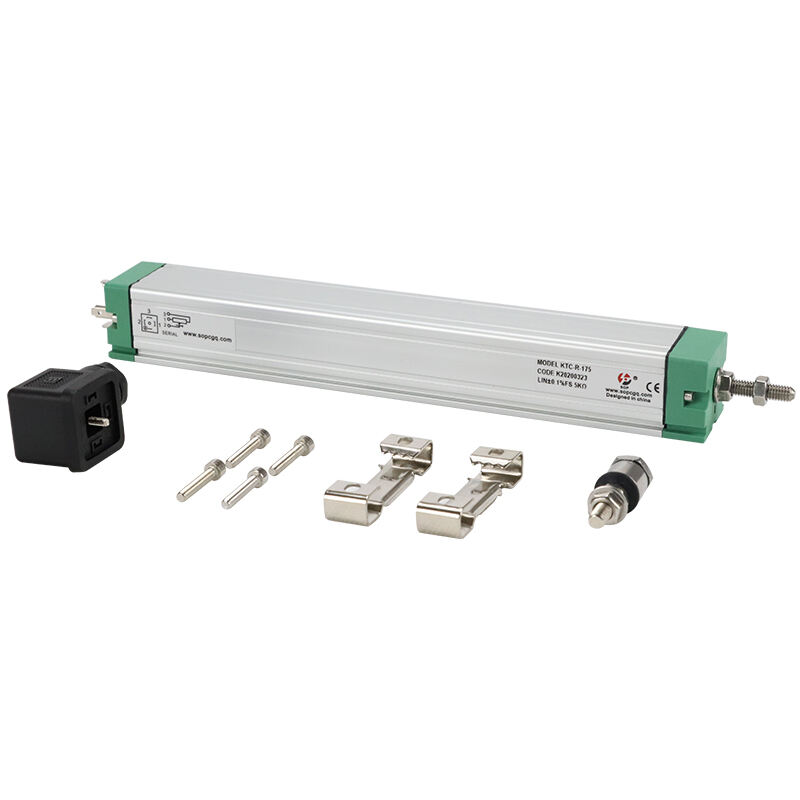What is a Linear Transducer?
A linear transducer is actually a very unique device that allows us to track motion in a linear fashion. You can think of it like a toy car that can only go forward and backwards. For example, a potentiometric linear transducer would help us determine how far that toy car goes when it travels. These tools are actually really important in engineering and technology because they help us understand movement. Linear transducers are used in many industries including medicine, factories, and car engineering. This text will explain how and why linear transducers are used in many different fields, and how important this is for a multitude of occupations.
Applications of Linear Transducers
Linear transducers can go many different applications. In construction, linear transducers are used to see how buildings or bridges shift. For example, they can be used to measure how a bridge wiggles when cars cross over it. In factories, people measure how machines move, such as conveyor belts that transport products. Just like a conveyor belt that has trouble when moving at the wrong speed, linear transducers help keep everything running properly. They can even be used in sports to measure how fast an athlete runs or how high they can jump. This data can teach us how to improve athletic performance by optimizing movement.
How Do Linear Transducers Aid in the Medical Field?
Linear transducers are quite handy and very important tools in the field of medicine. They are able to gauge how the heart blood pumps or how the nostrils stretch and narrow when we breathe in. This is vital data for physicians seeking to maintain their patients' health. Linear transducers assist in measuring the force employed when doctors are at work during surgeries. Linear transducers provide the most accurate data to doctors so the doctors are making the right choice for their patients and medical devices are working properly.
How They Keep Machines Working Better
Linear transducers also contribute to machine automation. Automation is the use of machines to perform tasks that humans would otherwise undertake. For example, a factory might have machines that assemble pieces of a toy. Linear transducers help ensure that these machines move frictionless and right. They can verify where a robotic arm is in an assembly process. This data tells the machine exactly how much force to apply, and how to move. In this manner, each aspect fits together seamlessly, and the machines can perform their functions effectively.
How does Linear Transducer Used in Car Engineering?
Linear transducers are also widely used in car engineering. They are very useful for measuring the motion of different components in an engine. For instance, they can monitor the movement of pistons in an engine. They implemented ODS on track, which connects to any ODS device and also tracks the movement of the car's suspension system, which helps keep the car steady over bumps or on rough roads. Car engineers who are able to manipulate an engine to experience higher tensile or compressive loads use resistive linear transducer to build better, more fuel-efficient, and safer cars. Can also be helpful in ensuring a car's reliability for drivers by providing critical data that tracks overall vehicle performance over time.
Conclusion
From medical to car engineering, a linear transducer is not only a tool, but an essential one. They provide us with information which helps engineers, doctors, etc., to make wise decisions. It would be extremely difficult to know how things move and function without linear transducers. Whether you are in factories, construction, or healthcare, SOP sells high-quality linear transducers that you can trust to get the job done effectively. These are tools that help facilitate and ensure that everything is working properly and safely, thus making our lives easier and better.
 EN
EN
 AR
AR HR
HR CS
CS DA
DA FI
FI FR
FR DE
DE EL
EL HI
HI IT
IT JA
JA NO
NO PL
PL PT
PT RO
RO RU
RU ES
ES SV
SV IW
IW ID
ID LV
LV LT
LT SR
SR SK
SK SL
SL UK
UK VI
VI ET
ET HU
HU TH
TH TR
TR FA
FA AF
AF KA
KA UR
UR BN
BN
